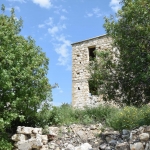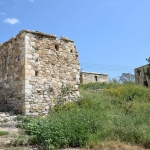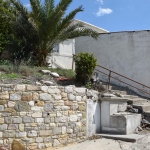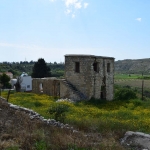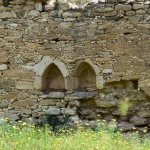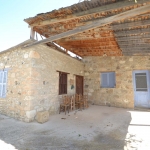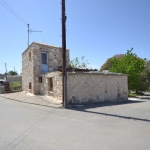
Within a short distance from the city of Pafos emerges a beautiful small village with a rich history and an abundance of natural beauties, the village of Agia Varvara.
In particular, the village is built at a distance of only 8 km from the city of Pafos, on a height on the right of the River Ezousa banks and on an altitude of 95 metres from the surface of the sea.
Historical Background
The history of the village appears to have begun even before the 17th century as there are findings which signify that the area had been inhabited ever since the Middle Copper Era.
In particular, according to the Community Council, hundreds of vessel fragments have been found from time to time both in cultivated and uncultivated land, something which proves that Agia Varvara is a community with a long history. Several of Agia Varvara’s archaeological treasures have not been salvaged due to the fact that, as senior citizens of the village report, “tomb raiders would dig at nights using torches to loot the unplundered tombs, while there were also several smugglers who would sell these ancient objects (p 41) *.
More light regarding the past of Agia Varvara was shed by the archaeological excavation held in the 1980s by a Canadian expedition, which focused on the area of Palaepafos. David Rupp mentions that Agia Varvara was a city surrounded by residences during the Cypriot Archaic Period. In fact, it is possible that it had been inhabited ever since the Middle Copper Era. Rupp also states that Agia Varvara used to be a significant archaeological site and that its abandonment was linked to the abandonment of Palaepafos.
According to Karouzis, the village is marked on Venetian maps, something which confirms its existence as back as the medieval years. At the beginning of the 19th century an English diplomat named William Turner visited the village and remarked that the “population was wiped out” in 1813 (Community Council Texts, P41). This was possibly linked to the plague which struck several areas at that time. However, Agia Varvara seems to have managed to survive this.
Up until 1975 the village had a mixed population. As a result of the Turkish invasion, the Turkish Cypriot residents left the village and settled in the occupied areas.
Naming
The name of the village is linked to its protector Saint, Agia Varvara. In fact, at the village there are two churches dedicated to Agia Varvara. The village was also known by the name “Engindere”, which in Turkish means “the vast plain” and this naming was used by the Turkish Cypriot residents of the community.
Population – Development
Agia Varvara is a community of the Pafos district with a small number of residents. However, over the past few years development is observed in the Community and this is attributed to its prominent geographic location, its fertile land, natural beauty, as well as a series of projects which have been completed in the village. More: Projects
Additionally, the development of the community is also favored by other factors such as the availability of building plots in the area and its two industrial zones.
As mentioned earlier, Ayia Varvara used to be a village with a mixed population. The course of the population numbers was upward from 1881 until 1960. Next, as the following table shows, its population decreased dramatically and this was due to the fact that its Turkish Cypriot residents were forced to abandon the village.
| Year | Number of Residents | Year | Number of Residents |
| 1881 | 142 | 1982 | 51 |
| 1921 | 165 | 2001 | 39 |
| 1960 | 229 |
Source:
Giorgos Karouzis, Strolling around Cyprus, Pafos (City and Disctrict), Nicosia, 2007
Great Cyprus Encyclopedia, Philokypros Publications, 1984
*Texts provided by the Community Council of Ayia Varvara
